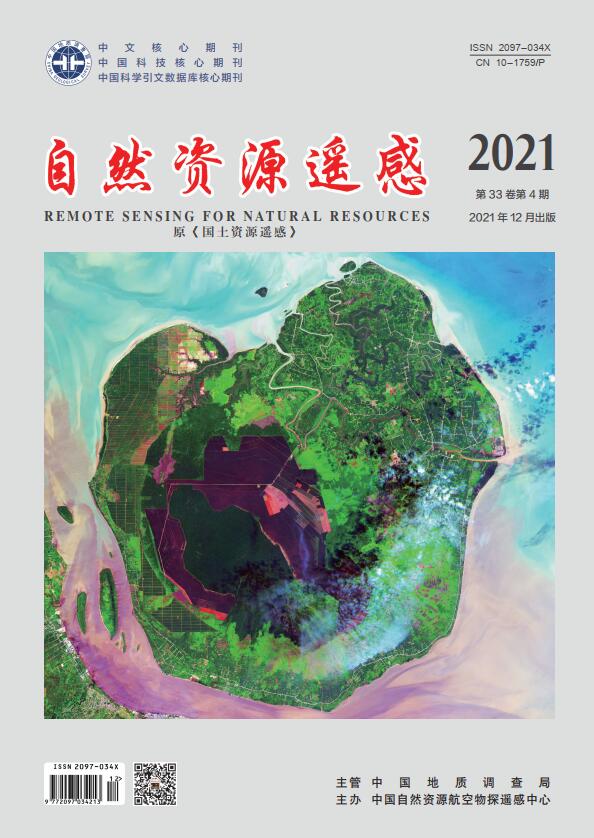| [1] |
周晓艳, 宋亚男. 1982—2015年国际土地利用冲突研究文献计量分析[J]. 城市发展研究, 2017,24(1):100-108.
Google Scholar
|
| [2] |
Zhou X Y, Song Y N. Bibliometric analysis of land use conflict research during 1982—2015[J]. Urban Studies, 2017,24(1):100-108.
Google Scholar
|
| [3] |
于伯华, 吕昌河. 土地利用冲突分析:概念与方法[J]. 地理科学进展, 2006,25(3):106-115.
Google Scholar
|
| [4] |
Yu B H, Lv C H. The progress and prospect of land use conflicts[J]. Progress in Geography, 2006,25(3):106-115.
Google Scholar
|
| [5] |
Campbell D J, Gichohi H, Mwangi A, et al. Land use conflict in Kajiado District,Kenya[J]. Land Use Policy, 2000,17(4):337-348.
Google Scholar
|
| [6] |
周德, 徐建春, 王莉. 近15年来中国土地利用冲突研究进展与展望[J]. 中国土地科学, 2015,29(2):21-29.
Google Scholar
|
| [7] |
Zhou D, Xu J C, Wang L. Process of land use conflict research in China during the past fifteen years[J]. China Land Sciences, 2015,29(2):21-29.
Google Scholar
|
| [8] |
刘贵利, 严奉天, 许顺才, 等. 城市发展中内外空间冲突与协调的战略选择——以石家庄市为例[J]. 地理研究, 2006(4):701-709,756.
Google Scholar
|
| [9] |
Liu G L, Yan F T, Xu S C, et al. The strategic disposition between the conflict and coordination from internal and external space in urban development:Taking Shijiazhuang City as a case[J]. Geographical Research, 2006(4):701-709,756.
Google Scholar
|
| [10] |
Zhao L Y, Peng Z R. Land system:An agent-based cellular automata model of land use change developed for transportation analysis[J]. Journal of Transport Geography, 2012,25(3):35-49.
Google Scholar
|
| [11] |
谭术魁. 中国土地冲突的概念、特征与触发因素研究[J]. 中国土地科学, 2008,22(4):4-11.
Google Scholar
|
| [12] |
Tan S K. Research on concept,characters and trigger factors of land conflicts in China[J]. China Land Science, 2008,22(4):4-11.
Google Scholar
|
| [13] |
廖李红, 戴文远, 陈娟, 等. 平潭岛快速城市化进程中三生空间冲突分析[J]. 资源科学, 2017,39(10):1823-1833.
Google Scholar
|
| [14] |
Liao L H, Dai W Y, Chen J, et al. Spatial conflict between ecological-production-living spaces on Pingtan Island during rapid urbanization[J]. Resources Science, 2017,39(10):1823-1833.
Google Scholar
|
| [15] |
Siebert S. Agricultural,architectural and archaeological evidence for the role and ecological adaptation of a scattered mountain oasis in Oman[J]. Journal of Arid Environments, 2005,62(7):177-197.
Google Scholar
|
| [16] |
周骏. 基于社会燃烧理论的农村土地冲突原因及其治理研究[D]. 南昌:南昌大学, 2013.
Google Scholar
|
| [17] |
Zhou J. Research on the cause and countermeasure of land conflicts based on social burning theory[D]. Nanchang:Nanchang University, 2013.
Google Scholar
|
| [18] |
曾黎, 杨庆媛, 杨人豪, 等. 三峡库区生态屏障区景观格局优化——以重庆市江津区为例[J]. 生态学杂志, 2017,36(5):1364-1373.
Google Scholar
|
| [19] |
Zeng L, Yang Q Y, Yang R H, et al. Landscape pattern optimization for ecological barrier in the Three Gorges Reservoir Area:A case study in Jiangjin,Chongqing[J]. Chinese Journal of Ecology, 2017,36(5):1364-1373.
Google Scholar
|
| [20] |
徐馨裔, 刘志有, 董露, 等. 国土空间规划视角下产业结构与土地利用结构相互关系研究——以新疆乌鲁木齐市为例[J]. 生态经济, 2020,36(4):69-74.
Google Scholar
|
| [21] |
XU X Y, Liu Z Y, Dong L, et al. Research on the mutual relationship between industrial structure and land utilization structure from the perspective of national land space planning:Taking Urumqi of Xinjiang as an example[J]. Ecological Economy, 2020,36(4):69-74.
Google Scholar
|
| [22] |
裴彬, 潘韬. 土地利用系统动态变化模拟研究进展[J]. 地理科学进展, 2010,29(9):1060-1066.
Google Scholar
|
| [23] |
Pei B, Pan T. Land use system dynamic modeling:Literature review and future research direction in China[J]. Progress in Geography, 2010,29(9):1060-1066.
Google Scholar
|
| [24] |
杨国安, 甘国辉. 基于分形理论的北京市土地利用空间格局变化研究[J]. 系统工程理论与实践, 2004(10):131-137.
Google Scholar
|
| [25] |
Yang G A, Gan G H. Land scape pattern change research of land use in Beijing based on fractal theory[J]. Systems Engineering-theory & Practice, 2004(10):131-137.
Google Scholar
|
| [26] |
彭佳捷, 周国华, 唐承丽, 等. 基于生态安全的快速城市化地区空间冲突测度——以长株潭城市群为例[J]. 自然资源学报, 2012,27(9):1507-1519.
Google Scholar
|
| [27] |
Peng J J, Zhou G A, Tang C L, et al. The analysis of spatial conflict measurement in fast urbanization region based on ecological security:A case study of Changsha Zhuzhou Xiangtan urban agglomeration[J]. Journal of Natural Resources, 2012,27(9):1507-1519.
Google Scholar
|
| [28] |
秦坤. 基于生态安全的土地利用空间冲突研究——以武汉城市圈[D]. 武汉:武汉大学, 2017.
Google Scholar
|
| [29] |
Qin K. The analysis of land use spatial conflicts based on ecological security:A case study of the urban agglomeration around Wuhan[D]. Wuhan:Wuhan University, 2017.
Google Scholar
|
| [30] |
周国华, 彭佳捷. 空间冲突的演变特征及影响效应——以长株潭城市群为例[J]. 地理科学进展, 2012,31(6):717-723.
Google Scholar
|
| [31] |
Zhou G H, PPeng J J. The evolution characteristic sand influence effect of spatial conflict:A case study of Changsha-Zhuzhou-Xiangtan urban agglomeration[J]. Progress in Geography, 2012,31(6):717-723.
Google Scholar
|
| [32] |
王思远, 刘纪远, 张增祥, 等. 中国土地利用时空特征分析[J]. 地理学报, 2001(6):631-639.
Google Scholar
|
| [33] |
Wang S Y, Liu J Y, Zhang Z X, et al. Analysis on spatial-temporal features of land use in China[J]. Acta Geographica Sinica, 2001(6):631-639.
Google Scholar
|
| [34] |
桑潇, 国巧真, 潘应阳, 等. 基于TM和OLI数据山西省潞城市土地利用动态变化分析与预测[J]. 国土资源遥感, 2018,30(2):125-131.doi: 10.6046/gtzyyg.2018.02.17.
Google Scholar
|
| [35] |
Sang X, Guo Q Z, Pan Y Y, et al. Research on land use dynamic change and prediction in Lucheng City of Shanxi Province based on TM and OLI[J]. Remote Sensing for Land and Resources, 2018,30(2):125-131.doi: 10.6046/gtzyyg.2018.02.17.
Google Scholar
|
| [36] |
王秀兰, 包玉海. 土地利用动态变化研究方法探讨[J]. 地理科学进展, 1999(1):3-5.
Google Scholar
|
| [37] |
Wang X L, Bao Y H. Study on the methods of land use dynamic change research[J]. Progress in Geography, 1999(1):3-5.
Google Scholar
|
| [38] |
张军峰, 孟凡浩, 包安明, 等. 新疆孔雀河流域人工绿洲近40年土地利用/覆被变化[J]. 中国沙漠, 2018,38(3):664-672.
Google Scholar
|
| [39] |
Zhang J F, Meng F H, Bao A M, et al. LUCC analysis of the upstream of the Kongqi River,Xinjiang China[J]. Journal of Desert Research, 2018,38(3):664-672.
Google Scholar
|
| [40] |
唐宏, 乔旭宁, 杨德刚, 等. 土地利用变化时空特征与区域发展关系研究——以渭干河流域为例[J]. 干旱地区农业研究, 2012,30(3):205-213.
Google Scholar
|
| [41] |
Tang H, Qiao X N, Yang D G, et al. Characteristics of temporal and spatial dynamic changes of land use and their relationship with regional development——A case study in the Weigan River Basin[J]. Agricultural Research in the Arid Areas, 2012,30(3):205-213.
Google Scholar
|
| [42] |
游巍斌, 何东进, 巫丽芸, 等. 武夷山风景名胜区景观生态安全度时空分异规律[J]. 生态学报, 2011,31(21):6317-6327.
Google Scholar
|
| [43] |
You W B, He D J, Wu L Y, et al. Temporal spatial differentiation and its change in the landscape ecological security of Wuyishan Scenery District[J]. Acta Ecologica Sinica, 2011,31(21):6317-6327. |






 DownLoad:
DownLoad: